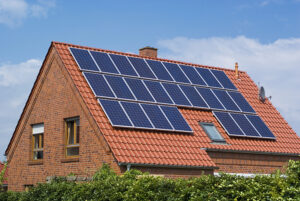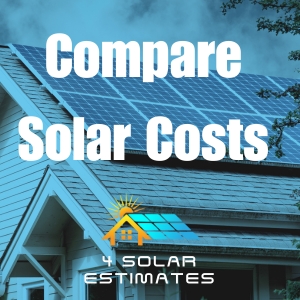
Do Home Solar Panels Pay for Themselves?
The adoption of home solar panels has surged in recent years, driven by a growing awareness of sustainable energy’s environmental and economic benefits. However, the question remains: Do home solar panels truly pay for themselves? This blog delves into the economics of solar energy, exploring initial costs, long-term savings, and the factors influencing the return on investment (ROI) of solar panels.
Understanding Solar Panels and Their Benefits
Solar panels convert sunlight into electricity, offering a renewable and clean energy source. The main types for residential use are monocrystalline, polycrystalline, and thin-film, each with unique efficiency rates and costs. Benefits extend beyond environmental impact, including energy independence and protection against rising utility prices, potentially leading to significant financial savings over time.
Expanded Environmental Benefits
Solar panels represent a cornerstone of sustainable living, significantly reducing reliance on fossil fuels, the primary cause of greenhouse gas emissions and global warming. By harnessing the sun’s power, homeowners contribute to a cleaner, more sustainable energy future. Key environmental benefits include:
- Reduction of Carbon Footprint: The average residential solar panel system significantly reduces carbon emissions each year, equivalent to planting over 100 trees annually.
- Decrease in Air Pollution: Solar panels produce clean energy that contributes to decreased air pollution, improving public health by reducing pollutants linked to cardiovascular and respiratory diseases.
- Conservation of Water Resources: Unlike conventional power generation methods, solar energy production requires no water, conserving vital water resources and reducing strain on local ecosystems.
Enhanced Energy Independence
Adopting solar energy enhances personal and national energy independence. By generating electricity on-site, homeowners reduce their reliance on the grid and are less vulnerable to fluctuating energy prices and supply disruptions. On a larger scale, increased adoption of solar energy can reduce a nation’s dependence on imported fuels, contributing to energy security and stability.
- Protection Against Rising Energy Costs: Solar panels lock in energy costs for decades, shielding homeowners from the rising prices of electricity supplied by utility companies.
- Resilience to Power Outages: Homes equipped with solar-plus-storage systems can maintain power during outages, ensuring uninterrupted access to electricity.

Financial Incentives and Market Advantages
The financial benefits of solar panels extend beyond monthly savings on electricity bills. Government incentives, increased property values, and the potential for earning through net metering contribute to the financial attractiveness of solar investments.
- Government Incentives and Rebates: Federal tax credits, along with state and local incentives, significantly lower the initial cost of solar installations, improving the return on investment.
- Increased Property Values: Homes with solar panel systems often sell at a premium compared to those without, attracting buyers interested in sustainability and lower operating costs.
- Net Metering: Homeowners can sell excess electricity generated by their solar panels back to the grid, often at a profit, further offsetting the costs of installation.
Societal Impacts
The shift toward solar energy has positive societal implications, contributing to job creation and community resilience.
- Job Creation: The growing solar industry supports employment in manufacturing, installation, and maintenance, contributing to economic growth.
- Community Resilience: Solar energy can power community centers, schools, and critical infrastructure during emergencies, enhancing community resilience to natural disasters and other crises.
Technological Innovation and Future Potential
Continuous advancements in solar technology promise even greater efficiency and accessibility in the future. Innovations such as bifacial solar panels, which capture sunlight from both sides, and thin-film technology, offering more flexible applications, are poised to revolutionize solar energy use.
- Integration with Smart Home Technology: Future solar systems will increasingly integrate with smart home technologies, allowing for more efficient energy use and management.
- Solar Battery Storage: Advancements in battery storage technology are making solar energy more reliable, enabling homeowners to store excess energy for use when sunlight is not available.

Initial Investment vs. Long-Term Savings
The upfront cost of solar panel installation can be substantial, encompassing the price of panels, inverters, mounting hardware, and labor. Despite this initial investment, homeowners can reap long-term savings through dramatically reduced electricity bills. Additionally, solar panels can increase property values, offering another form of financial return.
Factors Affecting the Return on Investment (ROI)
Several factors influence solar panels’ ROI:
- Geographic Location: Sunlight availability directly affects electricity generation.
- Energy Consumption: Higher household energy usage can lead to quicker cost recovery.
- Government Incentives: Tax credits and rebates significantly reduce upfront costs.
- Maintenance Costs: Minimal maintenance requirements contribute to the overall savings.
Calculating the Payback Period
The payback period, or break-even point, is calculated by dividing the total installation cost by the annual financial benefits (savings on electricity bills plus any incentives). Considering fluctuating electricity rates and potential increases in property value can provide a more accurate ROI estimation.
Steps for Calculating the Payback Period
- Gather Initial Investment Data: Compile all costs associated with the solar panel installation. This includes the price of the solar panels, inverters, mounting equipment, any necessary electrical updates, labor costs, and permits. Don’t forget to subtract any government rebates or tax incentives from this total to get the net initial investment.
- Estimate Annual Energy Savings: Calculate the annual energy production of your solar panel system in kilowatt-hours (kWh). This will depend on the system’s size, the efficiency of the panels, and the average sunlight exposure in your area. Then, multiply the annual production by your current electricity rate to estimate your annual savings. Consider using an online solar calculator or consulting with a solar provider for precise estimates.
- Account for Additional Financial Benefits: Include other financial incentives like selling back excess power through net metering, if applicable in your area. Also, consider the potential increase in property value; studies have shown that homes with solar panels can sell for more. However, this value can be harder to quantify and may not apply if you don’t plan on selling your home.
- Calculate the Payback Period: Divide the net initial investment by the annual financial benefits (savings plus any additional earnings or incentives). The result is the payback period, typically expressed in years.
Payback Period=Net Initial InvestmentAnnual Financial Benefits
- Adjust for Increasing Electricity Rates: Given that electricity rates tend to rise over time, your annual savings may increase each year. Incorporating these expected rate hikes into your calculation can provide a more accurate payback period and reflect the growing value of your solar investment over time.
- Consider Maintenance Costs: Although minimal, solar panels do require some maintenance. Include the estimated costs of periodic cleaning and any potential repairs or part replacements over the lifespan of the system. These costs can slightly extend the payback period but are generally low compared to the savings solar panels provide.

Factors Influencing the Payback Period
- Geographic Location: Sunlight intensity and duration vary by location, directly impacting the amount of electricity your system can generate.
- System Size and Efficiency: Larger, more efficient systems generate more electricity but also come with higher initial solar costs.
- Electricity Rates: Higher rates mean more significant savings and a shorter payback period.
- Incentives and Rebates: Upfront cost reductions from incentives and rebates can dramatically shorten the payback period.
- Energy Consumption: Homes with higher energy consumption can offset more of their electricity bill with solar, leading to quicker savings.
Calculating the payback period for solar panels is a crucial step in evaluating the financial benefits of solar energy. By understanding and accurately estimating the initial costs, annual savings, and other financial incentives, homeowners can make informed decisions about solar investments. Despite the variability in payback periods due to several influencing factors, solar energy remains a compelling investment for many, offering not just financial returns but also contributing to environmental sustainability.
Government Incentives and Support
Federal tax credits and state-specific incentives lower the effective cost of solar panel systems. Net metering policies allow homeowners to sell excess electricity back to the grid, further enhancing savings. Staying informed about current and upcoming incentives is crucial for maximizing the financial benefits of solar energy.
Maintenance and Longevity of Solar Panels
Solar panels require minimal maintenance, typically involving occasional cleaning and inspections. With lifespans exceeding 25 years and robust warranties, solar panels present a durable investment, ensuring long-term performance and savings. The maintenance and longevity of solar panels are critical factors that influence their overall value and effectiveness over time. Understanding the maintenance requirements and expected lifespan of solar panels can help homeowners manage their systems more effectively, ensuring optimal performance and maximizing the return on investment. Here, we delve deeper into what you can expect regarding the upkeep and durability of your solar panel installation.

Maintenance Requirements
Solar panels are renowned for their low maintenance needs, which is a significant advantage for homeowners. However, regular checks and minimal upkeep are essential to ensure they operate efficiently throughout their lifespan. Here are key maintenance aspects to consider:
- Routine Inspections: Annual inspections by a professional can help identify and rectify potential issues, such as loose wiring or damaged panels, which might affect performance.
- Cleaning the Panels: Dust, debris, bird droppings, and snow can accumulate on the panels, reducing their efficiency. While rain will naturally clean the panels in many locations, in dry or particularly dusty areas, periodic cleaning may be necessary. Homeowners can do this themselves with water and a soft brush or hire professionals for the job.
- Monitoring System Performance: Most modern solar systems come with monitoring software that allows homeowners to track energy production. A significant drop in performance could indicate a problem, such as shading from new obstructions, dirt buildup, or equipment issues.
Longevity and Durability
Solar panels are designed to withstand the elements, from scorching heat to freezing temperatures, and even hail or heavy snow in some cases. The durability of solar panels contributes significantly to their appeal as a long-term investment. Here’s what you need to know about their lifespan:
- Expected Lifespan: The average lifespan of solar panels is about 25 to 30 years. However, this doesn’t mean they stop producing electricity after this time; it simply means their efficiency decreases to a point where it might be beneficial to consider replacement.
- Degradation Rate: Solar panels typically have a degradation rate of about 0.5% to 1% per year. This means that after 25 years, most panels will still operate at around 75% to 87.5% of their original efficiency.
- Warranties: Manufacturers often offer warranties that reflect the panels’ longevity. A standard solar panel warranty guarantees that panels will operate above a certain efficiency level for a specified period, usually 25 years. Additionally, many manufacturers provide a separate warranty for the equipment itself, covering defects or failures.
Maximizing Solar Panel Longevity
To ensure your solar panels last as long as possible, consider the following tips:
- Opt for Quality: Investing in high-quality panels from reputable manufacturers can lead to longer lifespans and lower degradation rates.
- Professional Installation: Proper installation by experienced professionals can prevent many issues down the line. Ensure your installer uses high-quality mounting equipment and practices to avoid roof damage or panel misalignment.
- Regular Maintenance: Adhering to a regular maintenance schedule, as outlined above, will help catch and mitigate any potential issues before they can affect performance.

Future of Solar Energy and Technological Advancements
Emerging technologies, such as higher-efficiency panels and solar-plus-storage systems, promise to enhance the attractiveness of solar investments. Advancements in battery storage could revolutionize how solar energy is utilized, potentially reducing reliance on the grid and offering even greater savings.
Making the Decision: Is Solar Right for You?
Deciding to invest in solar panels involves assessing your home’s suitability, energy needs, and financial goals. Researching and selecting the right system, along with a reputable installer, are key steps toward a successful solar energy project.
While the initial cost of solar panel installation is significant, the potential for long-term savings and environmental benefits make it an attractive investment for many homeowners. With careful consideration of the factors influencing ROI and taking advantage of available incentives, solar panels can indeed pay for themselves, contributing to a more sustainable and financially sound future.

Leave a Reply